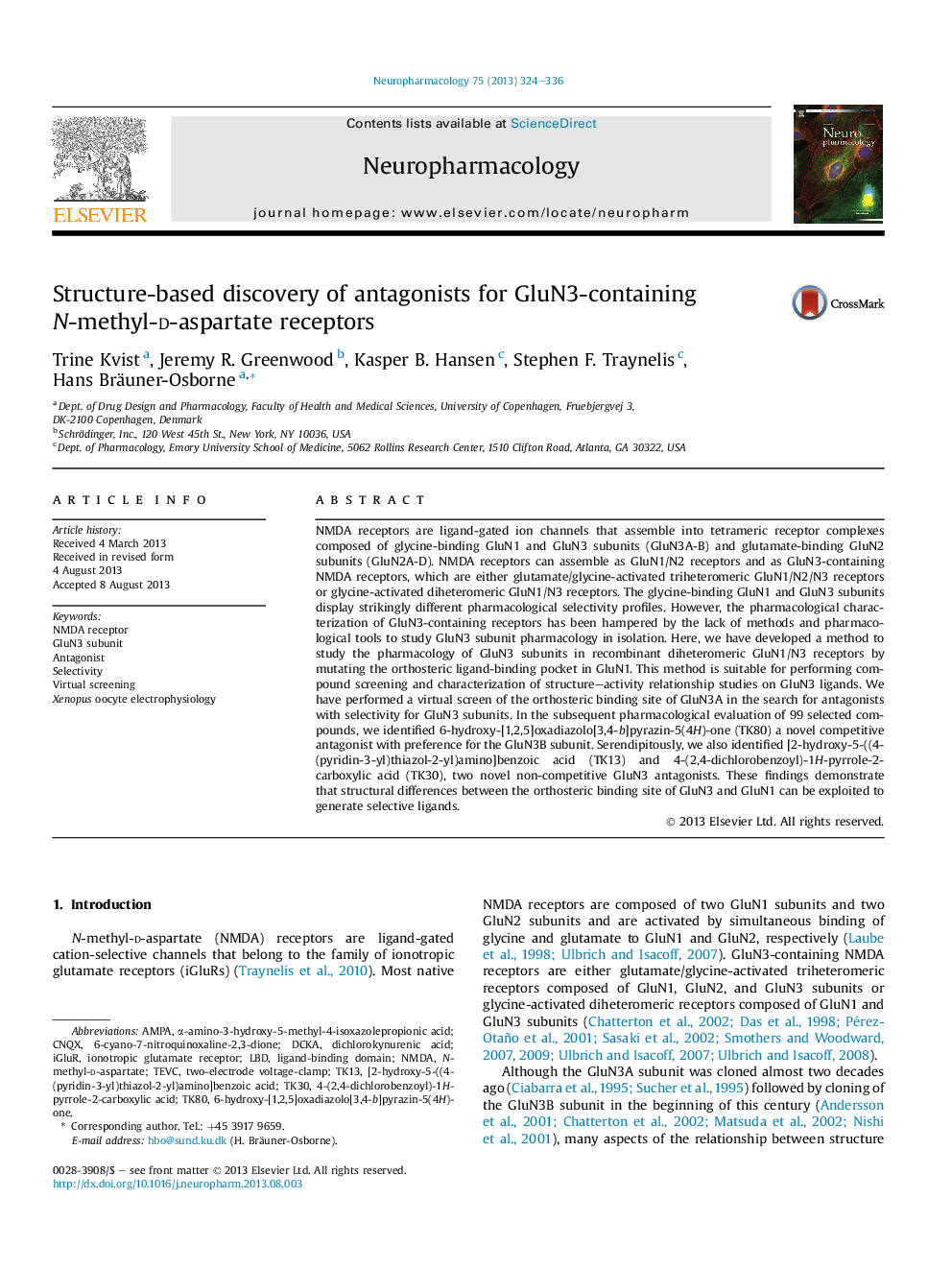| کد مقاله | کد نشریه | سال انتشار | مقاله انگلیسی | نسخه تمام متن |
|---|---|---|---|---|
| 2493368 | 1556638 | 2013 | 13 صفحه PDF | دانلود رایگان |

• A method to study pharmacology of GluN3 subunit in GluN1/N3 receptors was developed.
• A virtual screen of the orthosteric binding site of GluN3A was performed.
• 99 selected compounds were evaluated for GluN3 activity and selectivity.
• We identified a novel competitive antagonist with preference for the GluN3B subunit.
• Two non-competitive antagonists with preference for GluN3 subunits were identified.
NMDA receptors are ligand-gated ion channels that assemble into tetrameric receptor complexes composed of glycine-binding GluN1 and GluN3 subunits (GluN3A-B) and glutamate-binding GluN2 subunits (GluN2A-D). NMDA receptors can assemble as GluN1/N2 receptors and as GluN3-containing NMDA receptors, which are either glutamate/glycine-activated triheteromeric GluN1/N2/N3 receptors or glycine-activated diheteromeric GluN1/N3 receptors. The glycine-binding GluN1 and GluN3 subunits display strikingly different pharmacological selectivity profiles. However, the pharmacological characterization of GluN3-containing receptors has been hampered by the lack of methods and pharmacological tools to study GluN3 subunit pharmacology in isolation. Here, we have developed a method to study the pharmacology of GluN3 subunits in recombinant diheteromeric GluN1/N3 receptors by mutating the orthosteric ligand-binding pocket in GluN1. This method is suitable for performing compound screening and characterization of structure–activity relationship studies on GluN3 ligands. We have performed a virtual screen of the orthosteric binding site of GluN3A in the search for antagonists with selectivity for GluN3 subunits. In the subsequent pharmacological evaluation of 99 selected compounds, we identified 6-hydroxy-[1,2,5]oxadiazolo[3,4-b]pyrazin-5(4H)-one (TK80) a novel competitive antagonist with preference for the GluN3B subunit. Serendipitously, we also identified [2-hydroxy-5-((4-(pyridin-3-yl)thiazol-2-yl)amino]benzoic acid (TK13) and 4-(2,4-dichlorobenzoyl)-1H-pyrrole-2-carboxylic acid (TK30), two novel non-competitive GluN3 antagonists. These findings demonstrate that structural differences between the orthosteric binding site of GluN3 and GluN1 can be exploited to generate selective ligands.
Journal: Neuropharmacology - Volume 75, December 2013, Pages 324–336